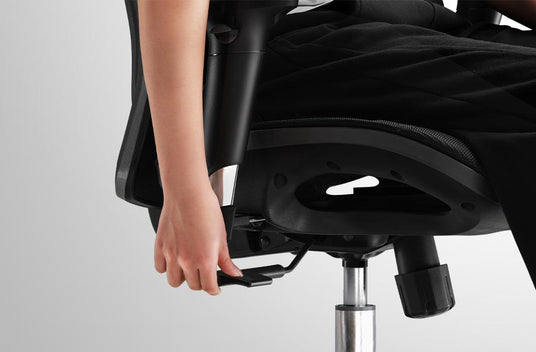
Lumbar Support
An office chair with lumbar support helps maintain an upright posture in the workplace. The lumbar support should be adjustable in height and, if possible, in depth for optimal adaptation to the spine. It relieves the discs and supports the back. Alternatively, the height of the backrest should be adjustable.

Joystick Function
An office chair with a rocking mechanism ensures plenty of room for movement while working. The backrest moves backwards at a 90° angle together with the seat. In contrast, an office chair with a synchronous mechanism has an opening angle variation ratio of 1:2 or 1:3. The advantage of this is that the muscles are loaded alternately.
Make sure you can change the firmness of the backrest with the rotary control, especially if you weigh less than 60kg or over 100kg. The backrest should be neither too soft nor too hard, so that the back can be optimally stabilized and relaxed. The higher the weight, the greater the resistance.

Headrest
For people who are prone to tension in the neck and shoulders, an office chair with a headrest is important. The head is no longer arbitrarily suspended in the air, effectively soothing the muscles and cervical spine. The height and angle of the headrest should be adjustable to suit the corresponding body shape.

Armrest
If you sit at a desk for 4 or more hours a day, you need an office chair with armrests on which to rest your forearms and elbows. This relaxes the muscles in the neck and shoulders.
